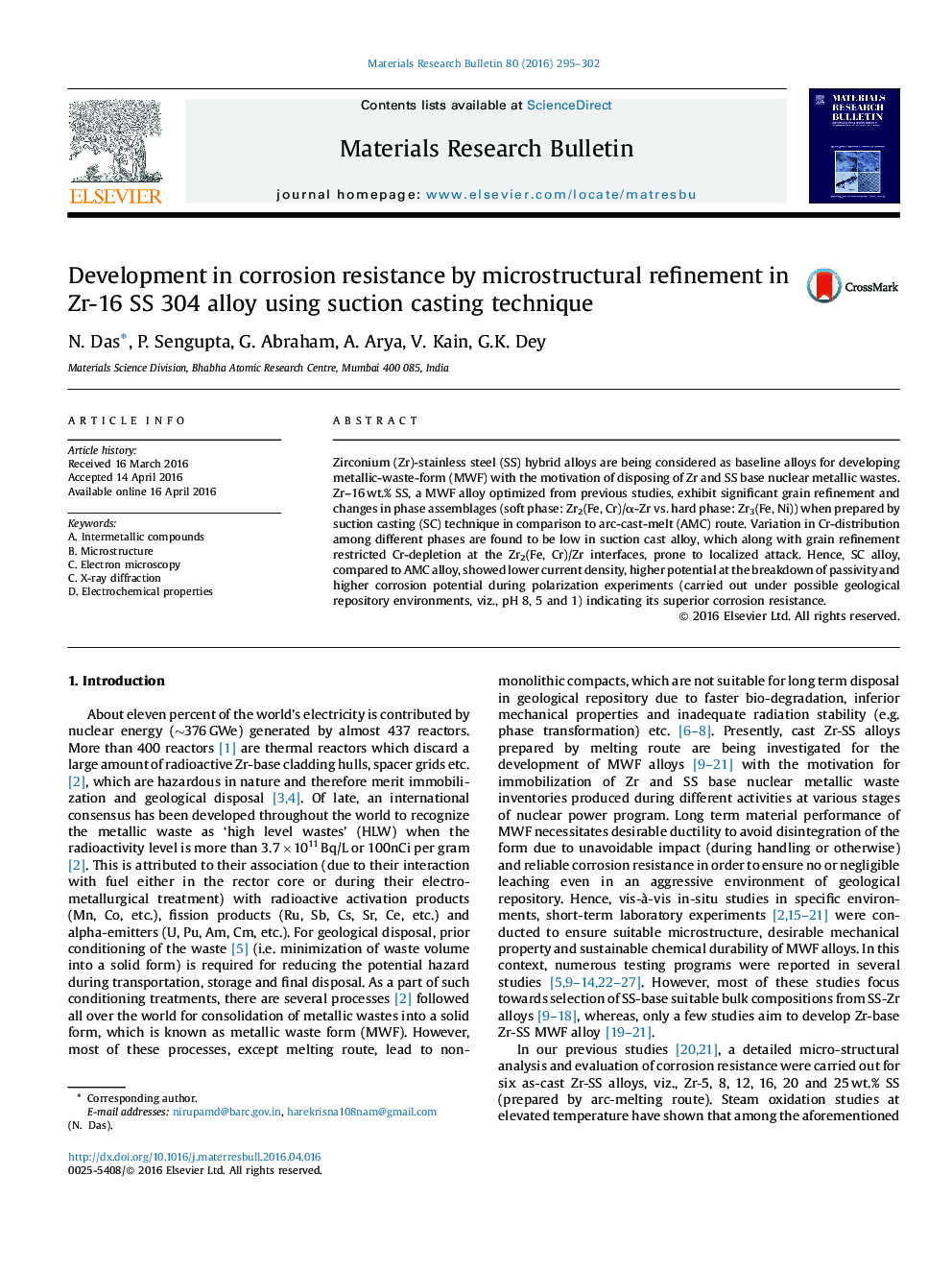| Article ID | Journal | Published Year | Pages | File Type |
|---|---|---|---|---|
| 1486957 | Materials Research Bulletin | 2016 | 8 Pages |
•Grain refinement was made in Zr–16 wt.% SS alloy while prepared by suction casting process.•Distribution of Laves phase, e.g., Zr2(Fe, Cr) was raised in suction cast (SC) Zr–16 wt.% SS.•Corrosion resistance was improved in SC alloy compared to that of arc-melt-cast alloy.•Grain refinement in SC alloy assisted for an increase in its corrosion resistance.
Zirconium (Zr)-stainless steel (SS) hybrid alloys are being considered as baseline alloys for developing metallic-waste-form (MWF) with the motivation of disposing of Zr and SS base nuclear metallic wastes. Zr–16 wt.% SS, a MWF alloy optimized from previous studies, exhibit significant grain refinement and changes in phase assemblages (soft phase: Zr2(Fe, Cr)/α-Zr vs. hard phase: Zr3(Fe, Ni)) when prepared by suction casting (SC) technique in comparison to arc-cast-melt (AMC) route. Variation in Cr-distribution among different phases are found to be low in suction cast alloy, which along with grain refinement restricted Cr-depletion at the Zr2(Fe, Cr)/Zr interfaces, prone to localized attack. Hence, SC alloy, compared to AMC alloy, showed lower current density, higher potential at the breakdown of passivity and higher corrosion potential during polarization experiments (carried out under possible geological repository environments, viz., pH 8, 5 and 1) indicating its superior corrosion resistance.
Graphical abstractFigure optionsDownload full-size imageDownload as PowerPoint slide
